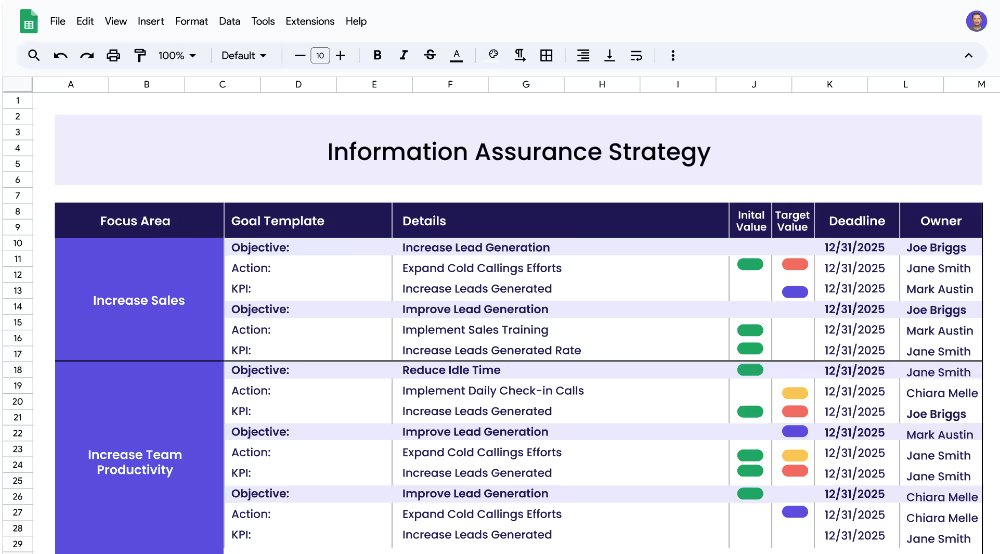A Information Assurance Strategy is a set of guidelines, processes, and protocols used to ensure the security and integrity of an organization's data and systems. It outlines the objectives, actions, and measures to be taken to protect an organization from security incidents and outages. By defining a clear strategy, an organization can ensure that its data and systems are secure and reliable.
Each focus area has its own objectives, projects, and KPIs to ensure that the strategy is comprehensive and effective.
This Information Assurance Strategy template is designed for IT teams and business leaders who want to develop a comprehensive strategy to ensure the security and integrity of their organization’s data and systems. It provides a structure for defining objectives, actions, and measures that can be used to protect an organization from security incidents and outages.
Focus areas are the broad categories that you want to address in your Information Assurance Strategy. Examples of focus areas include Information Assurance, Business Continuity, User Access Management, and more. Each focus area should have its own objectives, actions, and measures that are tailored to the specific needs of the organization.
Objectives are the goals that you want to accomplish for each focus area. These objectives should be clear, concise, and aligned with the overall strategy. When defining objectives, make sure that they are measurable and attainable.
Examples of some objectives for the focus area of Information Assurance could be: Increase Data Security, and Strengthen System Integrity.
KPIs are the targets that you want to achieve for each objective. These should be measurable, trackable, and achievable. KPIs should be defined with an initial value, a target value, and a unit of measurement.
An example of a KPI for the focus area of Information Assurance could be: Reduce security incidents by 10%.
Projects are the actions that need to be taken in order to reach the KPIs. These should be specific, achievable, and aligned with the overall strategy. Projects should be defined with an actionable step and a timeline for completion.
An example of a project related to Information Assurance could be: Implement Security Protocols.
If you’re eager to accelerate your strategy beyond the confines of traditional spreadsheets and see faster, more reliable outcomes, Cascade Strategy Execution Software is your next step. With tools that provide real-time updates, centralized collaboration, and integrated planning and execution, Cascade equips teams to act swiftly, adapt to changes effectively, and maintain consistent alignment. Elevate your strategic execution today with Cascade’s visuals dashboards. Sign-up for free or book a demo with one of our strategy experts.


